Picture this: you’re watching your favorite sci-fi movie, and suddenly you see familiar red rocks jutting up from an endless desert floor. Your brain starts to wonder – have you been to this “alien planet” before? The truth is, you probably have. Hollywood has been using our own backyard as the backdrop for otherworldly adventures for decades, and many of these locations look so bizarre they’ve fooled people into thinking they’ve spotted actual UFOs.
The Hollywood Trickery Behind Earth’s Alien Doppelgangers
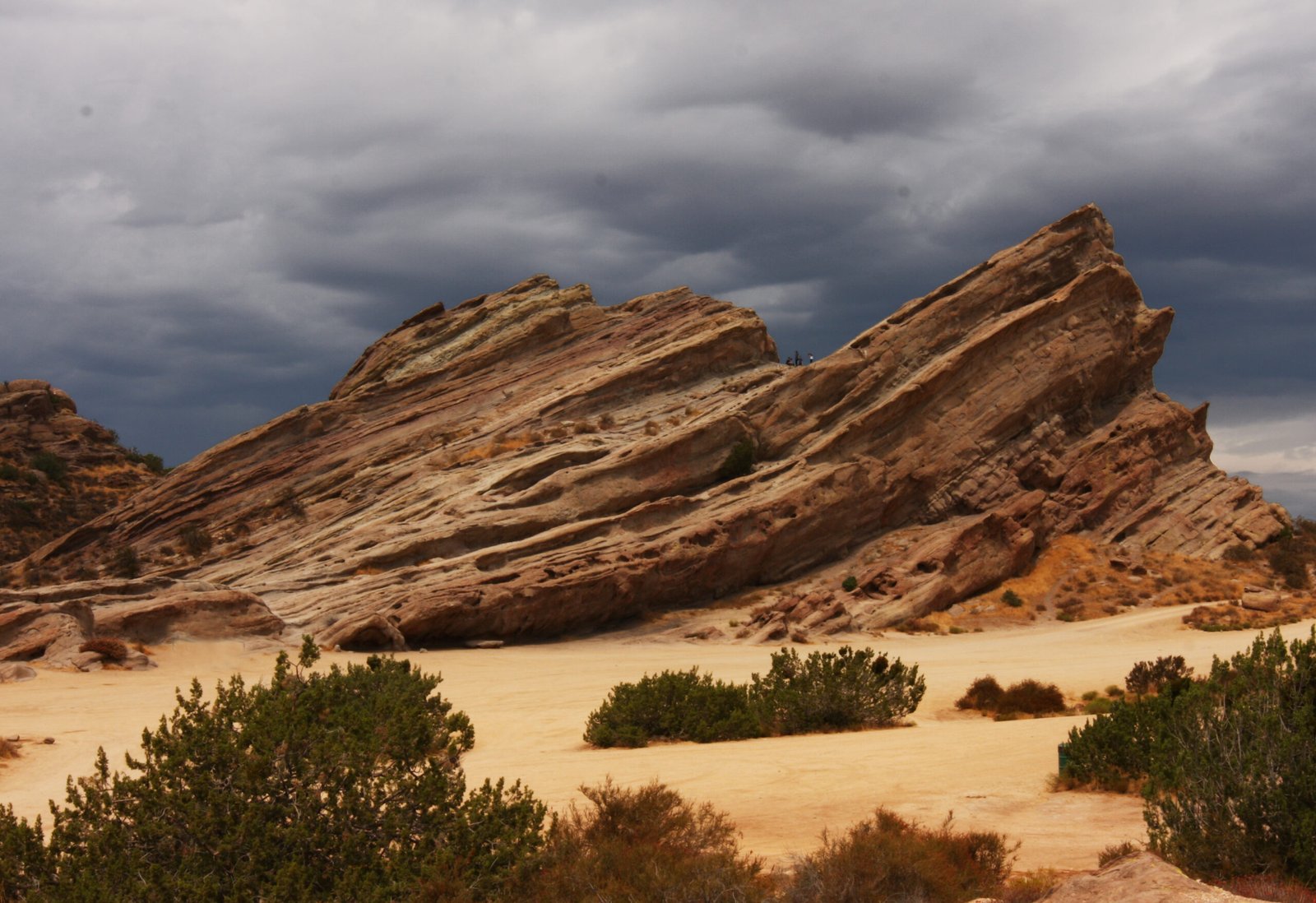
Have you ever stopped to think about how many “alien planets” in blockbuster movies are actually just clever camera angles of American landscapes? These Star Trek episodes and movies used one of the most popular film locations in Southern California: Vasquez Rocks Natural Area. Jagged Vasquez Rocks have served as the planet Vulcan in two separate Star Trek films, Star Trek IV (1986) and the recent reboot, Star Trek (2009). The desert Southwest has become Hollywood’s go-to destination for creating convincing extraterrestrial worlds, and it’s not hard to see why. These landscapes are so dramatically different from what most people consider “normal” terrain that they instantly transport viewers to another world. Green, grass-obscured landscapes don’t suggest alien worlds the way deserts with their bared rock formations can. Strange geologies can provide interesting disorientation through unusual cinematographic angles and the suggestion of movement in static shots. What’s truly fascinating is how these same otherworldly features that make perfect movie sets also create genuine confusion for people who encounter them in real life, sometimes leading to actual UFO reports and alien sightings.
Death Valley’s Martian Masquerade
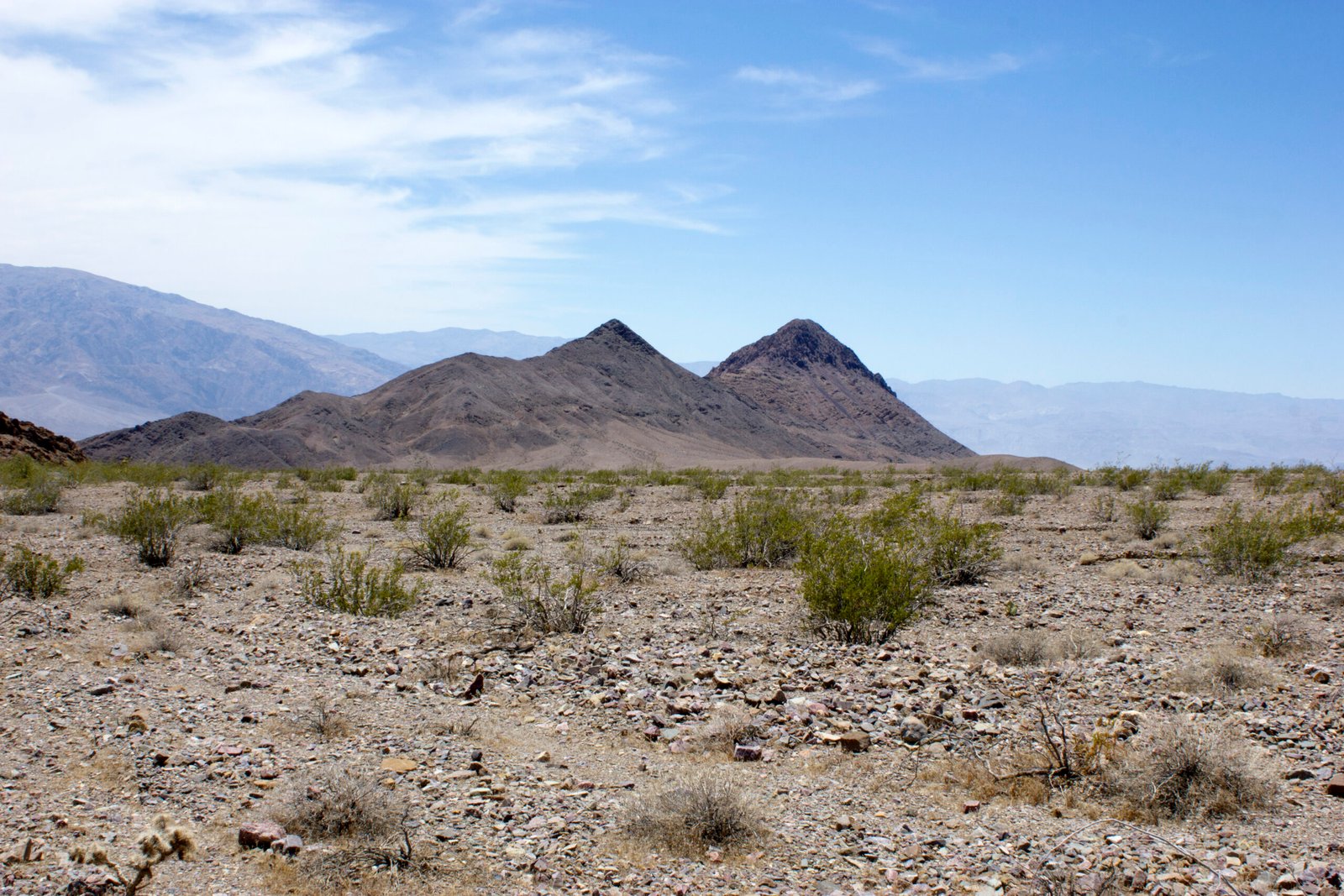
Death Valley National Park is a den of mysteries and unusual phenomena. From the shimmering salt flats of Badwater Basin and craggy formations of the Devil’s Golf Course, to the rainbow streaks of minerals at Artist’s Palette and the ancient petroglyphs above Mesquite Spring, there are a lot of strange sights here. This California desert has fooled countless visitors into believing they’ve stumbled into an alien landscape. As any self-respecting landscape photographer should get excited when they hear terms like “1,000 year flood” when referencing a desert landscape – as it means there could be unique (alien?) conditions for photography. The park’s most famous mystery involves the sailing stones of Racetrack Playa, massive boulders that appear to move across the desert floor by themselves, leaving perfectly straight trails behind them. Racetrack Playa is home to mysterious “sailing stones” that move across the desert floor– all on their own. The stones were first discovered in the early 1900s, and people were immediately mystified. The rocks, which range in size from about six to 18 inches in diameter, don’t travel in straight lines– they can veer left and right and even move backwards, plus stones of equal size didn’t travel equal distances, and to top it all off, no one had ever actually witnessed the stones moving. It’s no wonder that this surreal landscape has been the subject of numerous UFO sightings over the years.
Antelope Canyon’s Otherworldly Chambers

Antelope Canyon, located near Page, Arizona, is the most photographed canyon in the American Southwest. Travellers flock here to capture its masterpiece of colours while admiring its smooth, wave-like texture. The slot canyon’s ethereal beauty looks more like the interior of an alien spacecraft than anything found on Earth. Antelope Canyon was formed by the erosion of Navajo Sandstone due to flash flooding and other sub-aerial processes. When sunlight filters down through the narrow opening above, it creates beams of light that dance across the flowing sandstone walls in colors ranging from deep purple to brilliant orange. Photography within the canyons is difficult due to the wide exposure range (often 10 EV or more) made by light reflecting off the canyon walls. The canyon’s smooth, undulating walls and mysterious lighting have led many visitors to describe the experience as “stepping into another dimension.” The Navajo name for Upper Antelope Canyon is Tsé bighánílíní, which means ‘the place where water runs through the (Slot Canyon) rocks’. Lower Antelope Canyon is Hazdistazí (called “Hasdestwazi” by the Navajo Parks and Recreation Department), or ‘spiral rock arches’. The fact that these natural formations required guided tours for safety reasons only adds to their mystique, making visitors feel like they’re exploring a restricted alien site.
Mono Lake’s Alien Towers
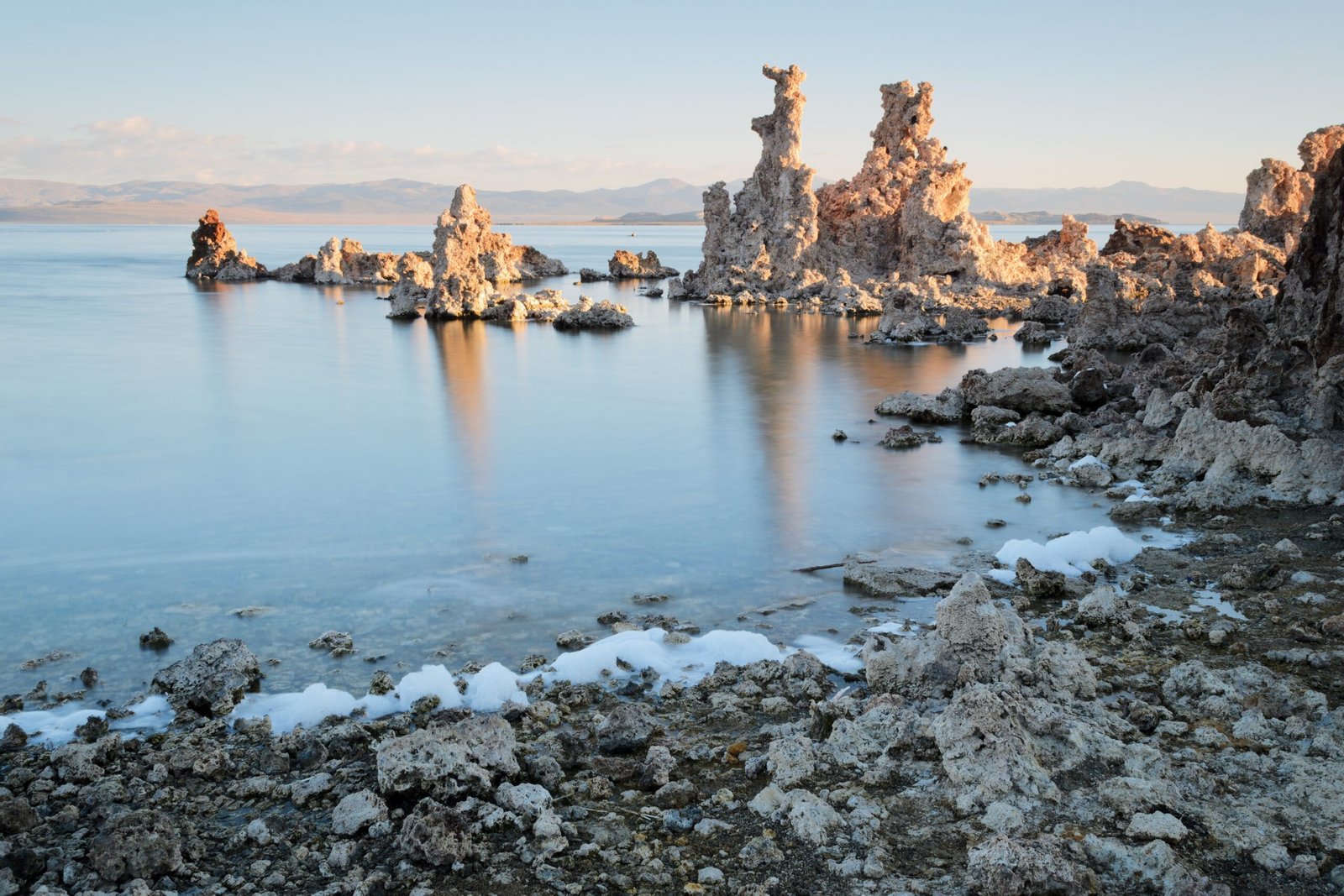
Mono Lake is one of the oldest lakes in the world, at 7600000 years of age. Located in Mono County, California, the tufa towers on the shore of Mono Lake, are made of unusually shaped limestone pinnacles, giving this place an alien-like appearance. These bizarre stone towers rising from the alkaline lake look like something that could only exist on another planet. These types of limestone pinnacles usually only grow in the deep ocean. Mono Lake has no outlets to seas and is famous for producing large deposits of alkaline particles. The lake’s waters are so unique that they actually feel different to the touch. In addition to its unique geological features, the water of Mono Lake also exhibits some mysterious properties. Its thick and oily water is slippery to the touch and contains high concentrations of salt and baking soda. Upon first glance at Mono Lake Tufa State Reserve, it’s not hard to imagine that you’ve left Earth entirely, and landed on a different planet. The shallow saline lake, located right in the middle of the desert, is surrounded by strange, towering formations known as “tufa” that give the area an otherworldly feel. The combination of these ghostly towers, the mirror-like surface of the hyper-saline lake, and the stark desert backdrop has made Mono Lake a magnet for UFO enthusiasts and alien seekers. Mono Lake’s otherworldly landscape, with towering tufa formations and sparkling winter snow, makes it a popular destination for photographers and nature enthusiasts.
Vasquez Rocks’ Star Trek Fame
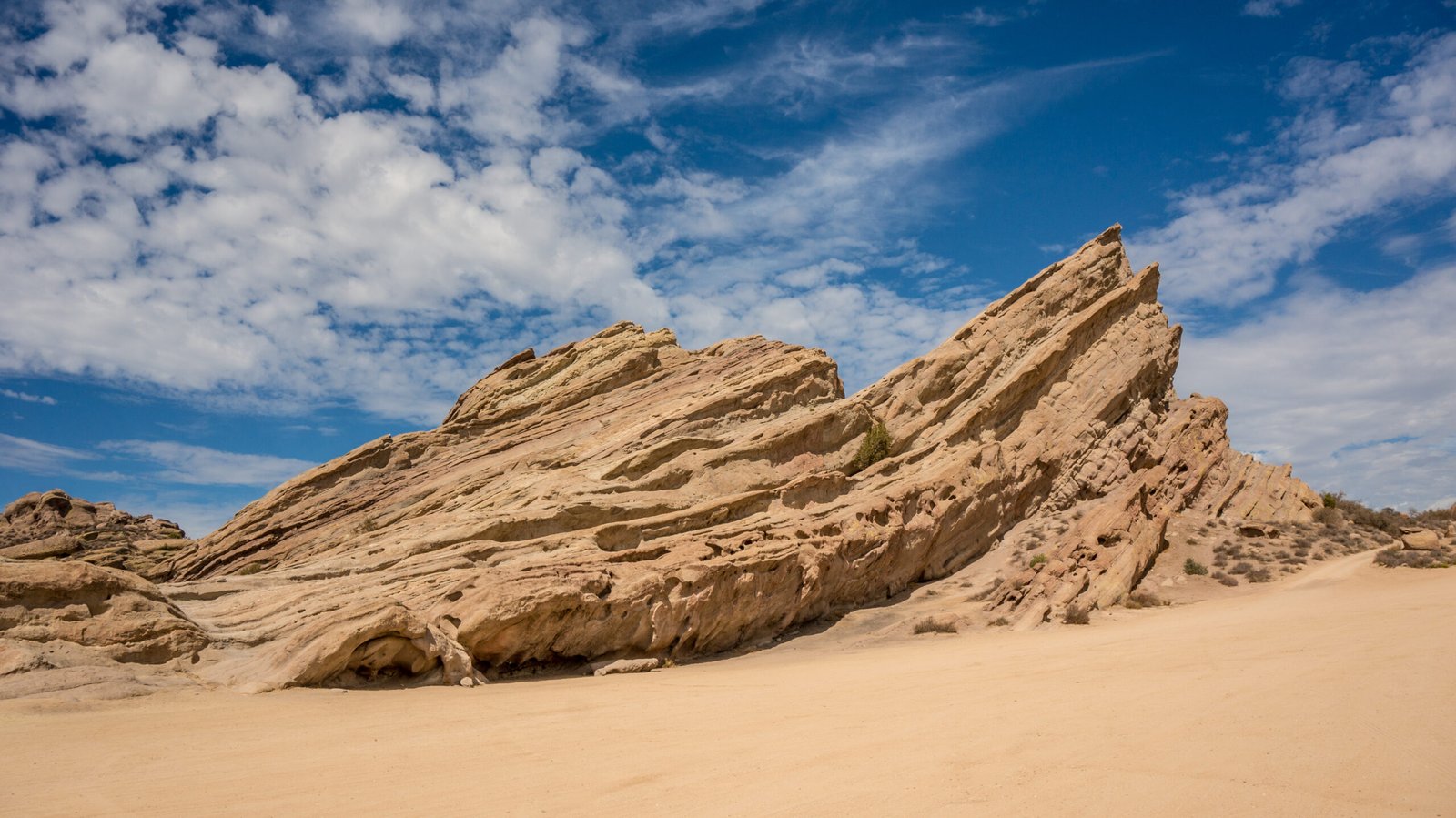
There are few sites as strange (or used in movies and TV as often) as Vasquez Rocks. The dramatic sandstone formation jutting up from the desert is an incredibly dramatic site, for either a hike or a film production. These tilted rock slabs have become synonymous with alien worlds thanks to their countless appearances in science fiction productions. Seriously, I cannot emphasize enough how many movies and TV shows shot scenes here. Star Trek, New Girl, Blazing Saddles, Big Bang Theory, Outer Limits, Friends, Power Rangers… I could go on, but you get the idea. Jagged Vasquez Rocks have served as the planet Vulcan in two separate Star Trek films, Star Trek IV (1986) and the recent reboot, Star Trek (2009). In Star Trek IV, Spock ascends the tall rocks to meditate, framed against the red hue of the Vulcan sky. The location has become so iconic as an “alien planet” that many visitors arrive expecting to see something extraterrestrial. Another SF film, Starship Troopers (1997), also shot scenes at Vasquez Rocks. Celebrating their battle success on Tango Urilla (a fight actually filmed in South Dakota’s badlands), the Roughnecks spend that night partying under the recognizable tilt of Vasquez Rocks. The dramatic angled formations, created by seismic activity along the San Andreas Fault, look so unnatural that they genuinely confuse people who stumble across them without prior knowledge of their Hollywood fame.
White Sands’ Extraterrestrial Desert
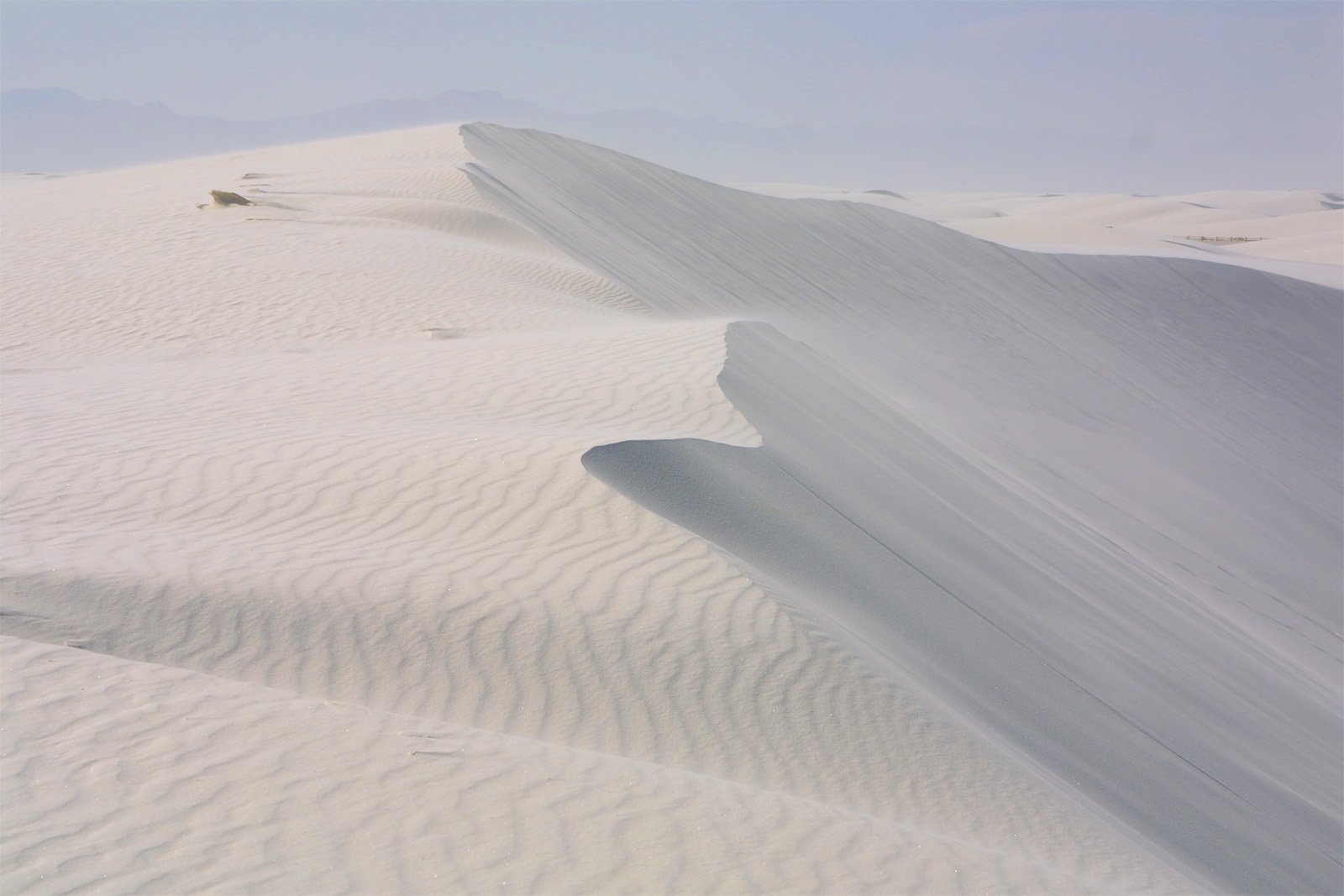
Rush, Ronald Greer, and the rest of the SGU team by traveling to White Sands National Monument, 15 miles west of Alamogordo. Visitors can have an easier time traversing this world than the SGU team by taking a scenic drive through the exoplanet, stopping at interpreted pull-offs and walking out across the white sand dunes. This New Mexico wonderland consists of 275 square miles of pure white gypsum sand dunes that shift and change constantly with the wind. The blindingly white landscape creates an environment so alien that NASA has used it for testing lunar rovers and training astronauts. The dunes are made of gypsum crystals, which unlike regular sand, don’t absorb heat from the sun, making it comfortable to walk on even in scorching temperatures. The wind-swept dunes keep the park changing. Road graders routinely scrape the shifting sand road leading into the park. The endless expanse of white sand creates optical illusions and disorientation that can make visitors feel like they’ve been transported to another planet. The contrast between the brilliant white dunes and the deep blue sky is so stark and unnatural-looking that it’s been mistaken for snow-covered alien terrain by people who’ve only seen it in photographs. At sunset and sunrise, the dunes take on an ethereal glow that has led to numerous reports of strange lights and unidentified flying objects in the area.
The Goblin Valley Otherworld
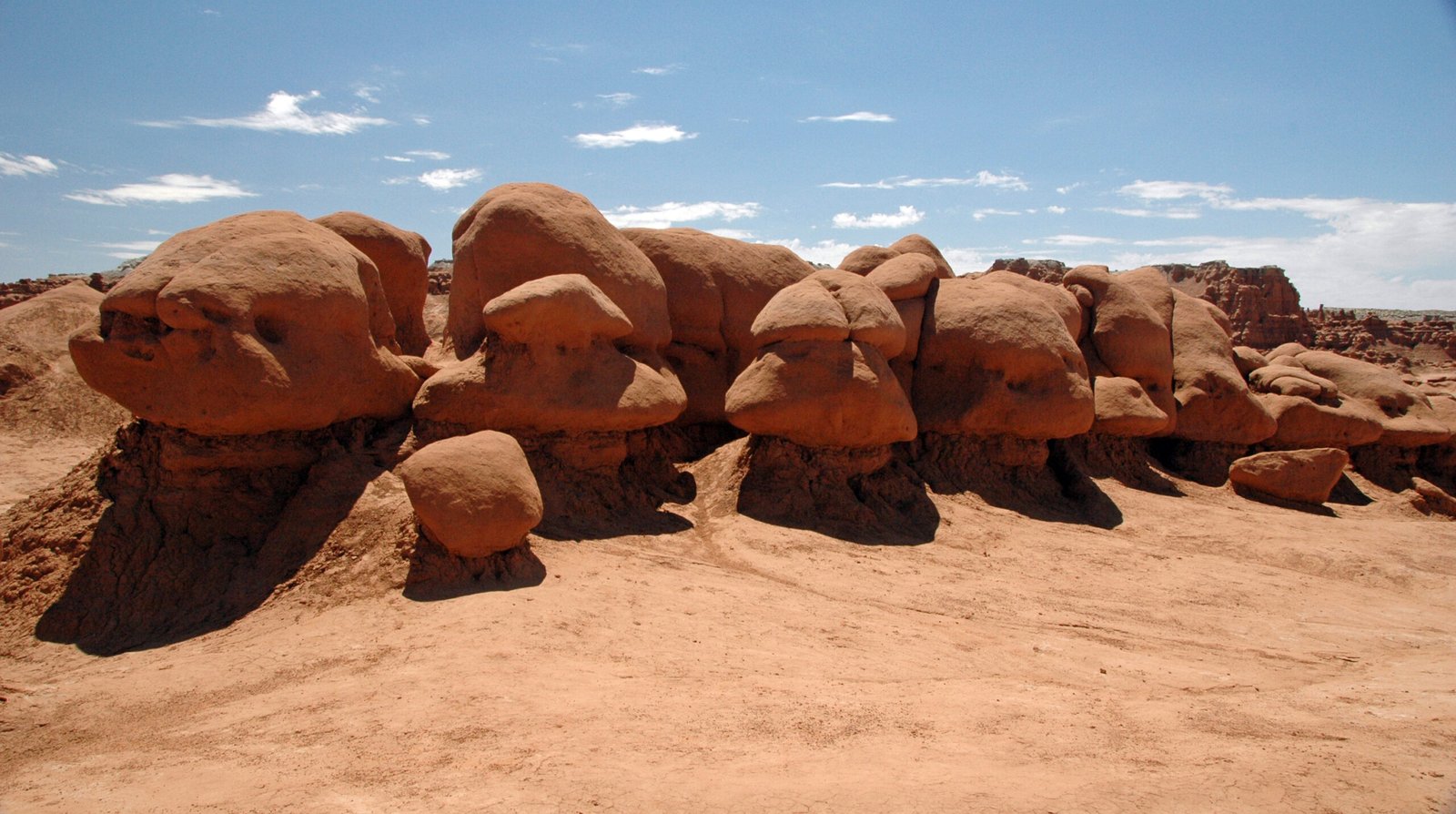
The otherworldly rock formations at Goblin Valley State Park can seem like they come from an alien planet, making it the perfect backdrop for movies. The sandstone hoodoos were famously used as the foundation for the Rock Monster in the campy, sci-fi film, “Galaxy Quest” starring Tim Allen and Sigourney Weaver. This Utah desert park is filled with thousands of mushroom-shaped rock formations that look like they were carved by alien hands. The “goblins” stand clustered together in groups, creating an landscape that defies earthly logic. These formations were created over millions of years by the erosion of soft sandstone beneath a harder cap rock, but to the untrained eye, they appear completely unnatural. The park’s red rocks and bizarre formations have made it a favorite among science fiction filmmakers and UFO enthusiasts alike. Goblin Valley has also been featured in other productions, including “Rubin and Ed” (1991), “City Slickers II: The Legend of Curly’s Gold” (1994) and “The Tree of Life” (2011). Visitors often report feeling like they’re walking through an alien metropolis, with the goblin formations towering around them like bizarre monuments to some unknown civilization.
Vermilion Cliffs’ Martian Landscape
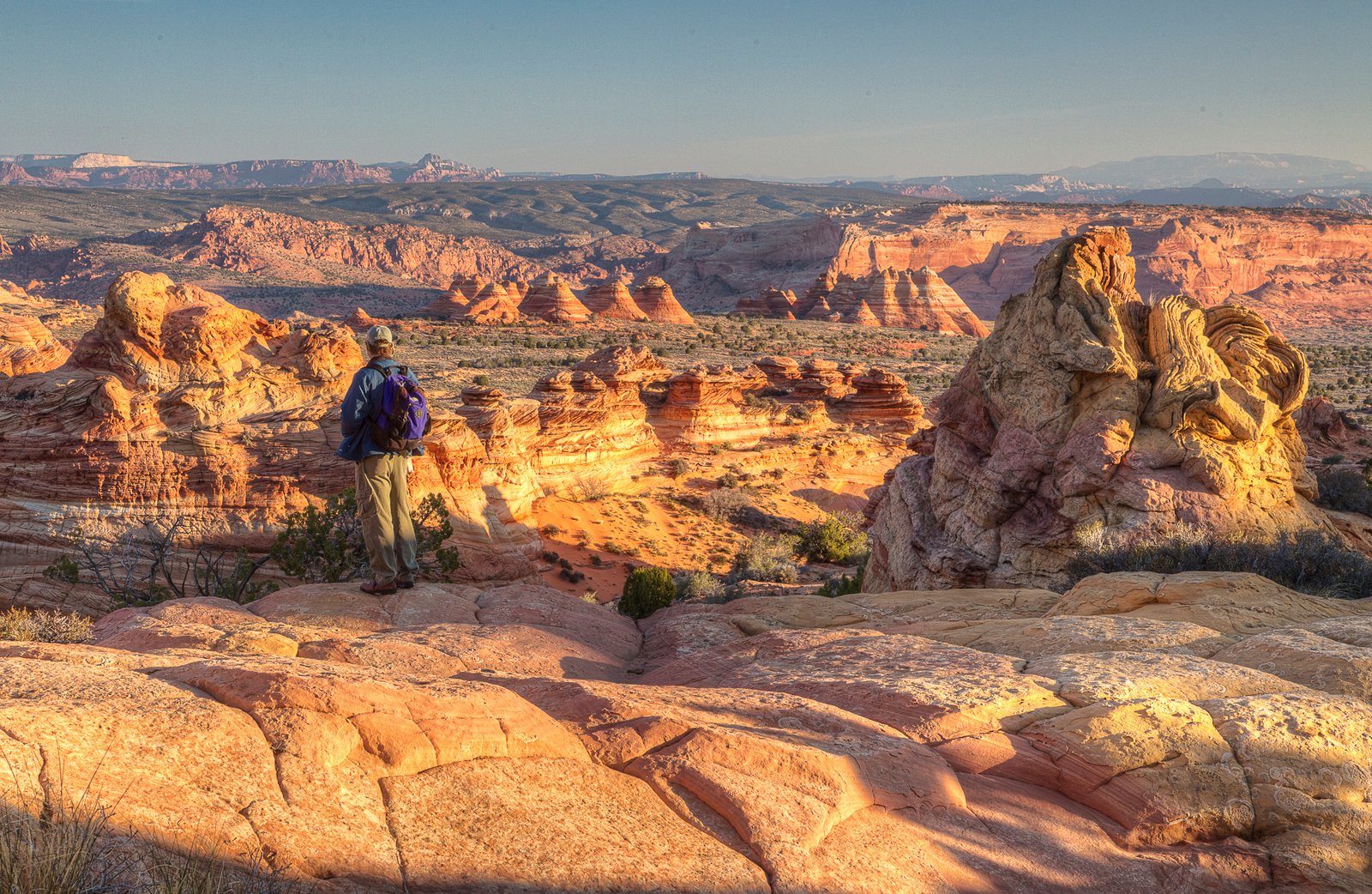
Just south of the Utah state line, Vermilion Cliffs is one of the most visually arresting places in the United States. The area’s swirling sandstone canyons and arches are ripe for exploration, with few visitors likely to be encountered. The vast cliffs themselves, which run for 48 kilometers and range between 2,000 and 3,000 feet, can be seen in all their glory from Highway 89A. These towering red and orange cliffs look remarkably similar to images sent back from Mars rovers, creating an otherworldly experience for anyone who ventures into the area. The rock formations display layers of geological history in vivid colors that seem almost too vibrant to be natural. The isolation and dramatic scale of the cliffs contribute to their alien atmosphere – many visitors report feeling completely alone on another planet while exploring the area. The interplay of light and shadow on the massive cliff faces creates patterns and shapes that can easily be mistaken for artificial structures when viewed from a distance. The resemblance to Martian landscapes is so striking that several space agencies have used similar terrain for testing equipment destined for Mars missions.
The Badlands’ Alien Archaeology
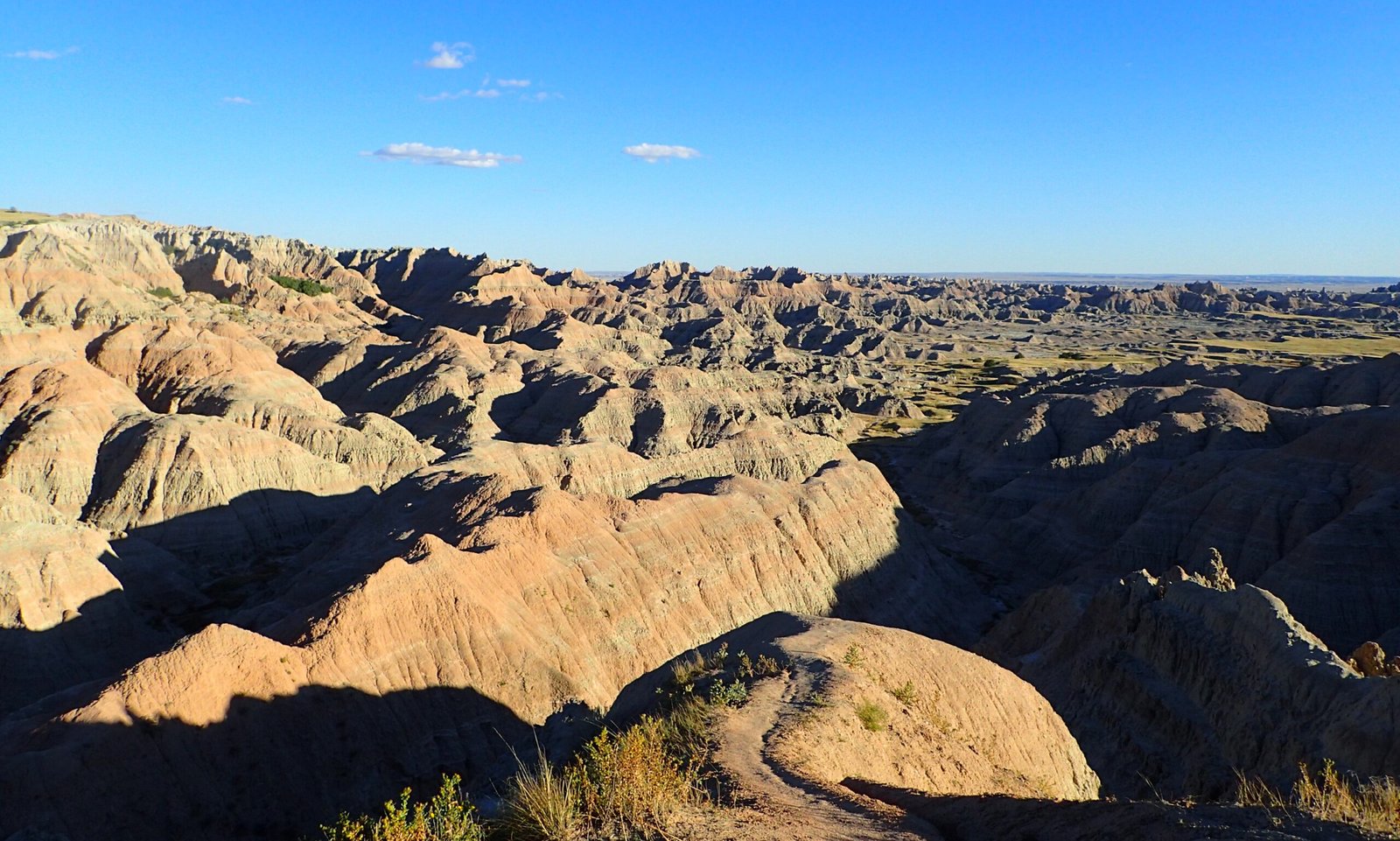
Celebrating their battle success on Tango Urilla (a fight actually filmed in South Dakota’s badlands), the Roughnecks spend that night partying under the recognizable tilt of Vasquez Rocks. South Dakota’s Badlands National Park presents a landscape so bizarre and sculpted that it appears to be the work of alien architects rather than natural erosion. These layered rock formations reveal 75 million years of geological history in stark, dramatic layers that rise from the prairie like ancient alien ruins. The sharp spires, deep canyons, and colorful striations create an environment that looks more like something from a science fiction novel than the American Midwest. Fossils embedded in the rock faces add to the otherworldly feeling, making visitors feel like they’re exploring an ancient alien burial ground. The dramatic temperature changes between day and night, combined with the stark landscape, create an environment so harsh and alien that it’s often compared to Mars. The park’s lunar-like appearance has made it a popular filming location for science fiction movies and has generated numerous UFO sighting reports from confused travelers who couldn’t believe such a landscape existed on Earth.
Monument Valley’s Sacred Alien Territory

This trading post in the Navajo Nation’s Monument Valley became a key location for Hollywood Westerns after director John Ford’s “Stagecoach” (1939) established the area as the symbol of “The West.” Today, Goulding’s Lodge remains a gateway to this iconic landscape, preserving its rich history and enduring legacy in film and Native American culture. While most famous for Western films, Monument Valley’s towering sandstone buttes and mesas have also served as alien landscapes in numerous science fiction productions. The massive stone monoliths rising from the desert floor look like monuments built by an advanced civilization, not natural rock formations. The valley’s sacred significance to the Navajo people adds another layer of mystery that has attracted UFO enthusiasts and alien seekers for decades. The isolated location, combined with the dramatic scale of the formations, creates an atmosphere where visitors frequently report feeling like they’re being watched by unseen forces. The interplay of light and shadow on the massive rock faces throughout the day creates constantly changing shapes and patterns that can easily be misinterpreted as artificial structures or spacecraft. Many visitors describe experiencing a profound sense of otherworldliness while exploring the valley, as if they’ve stepped into a different dimension altogether.
The Danakil Depression’s Hellish Alien World

The Danakil Depression is one of the most inhospitable and alien places on Earth. Known as the “gateway to hell” according to the BBC, the Danakil Depression is probably the closest you’ll ever be able to come to standing on the surface of Venus (without the crushing atmosphere, of course). While technically located in Ethiopia, the extreme conditions and alien appearance of this landscape mirror similar formations found in the American Southwest. Choking sulphuric acid and chlorine gases fill the air, while acid ponds and geysers pepper the landscape. These same types of extreme geological features can be found in places like Yellowstone’s thermal areas and Nevada’s geothermal fields, creating equally alien environments on American soil. The colorful mineral deposits, bubbling hot springs, and otherworldly rock formations found in these locations have led many visitors to believe they’ve encountered evidence of extraterrestrial activity. The harsh conditions and bizarre appearance of these landscapes create an environment so foreign to typical earthly experience that they genuinely confuse and disorient visitors, leading to numerous reports of UFO sightings and alien encounters.
Yellowstone’s Alien Hot Springs

Vulcan began life in the movies in Star Trek: The Motion Picture through a combination of on-location filming at Yellowstone National Park, set recreation in a studio, and matte painting. The planet Vulcan was filmed at Minerva Terrace in the Mammoth Hot Springs area of the national park’s boardwalks, with the white travertine in the front to mid-ground and the hot springs steaming in the background. Yellowstone’s geothermal features create landscapes so bizarre they’ve been used to represent alien worlds in major Hollywood productions. The colorful bacterial mats around hot springs create rainbow patterns that look more like abstract art than natural phenomena. Grand Prismatic Spring, in particular, displays a spectrum of colors so vivid and unnatural-looking that many visitors initially assume it’s artificial. The constant steam and bubbling from geothermal features create an environment that feels alive and alien, as if the earth itself is breathing. The mineral deposits around these features build up into formations that look like alien architecture or the remains of extraterrestrial technology. The green hillsides, the mountains, and the visitor parking area below were all removed, being replaced by a matte background with a giant moon painted on it. The combination of unusual colors, mysterious sounds, and otherworldly smells creates a sensory experience so foreign that it has generated numerous UFO sighting reports and stories of alien encounters throughout the park’s history.
California’s Fly Geyser Alien Installation
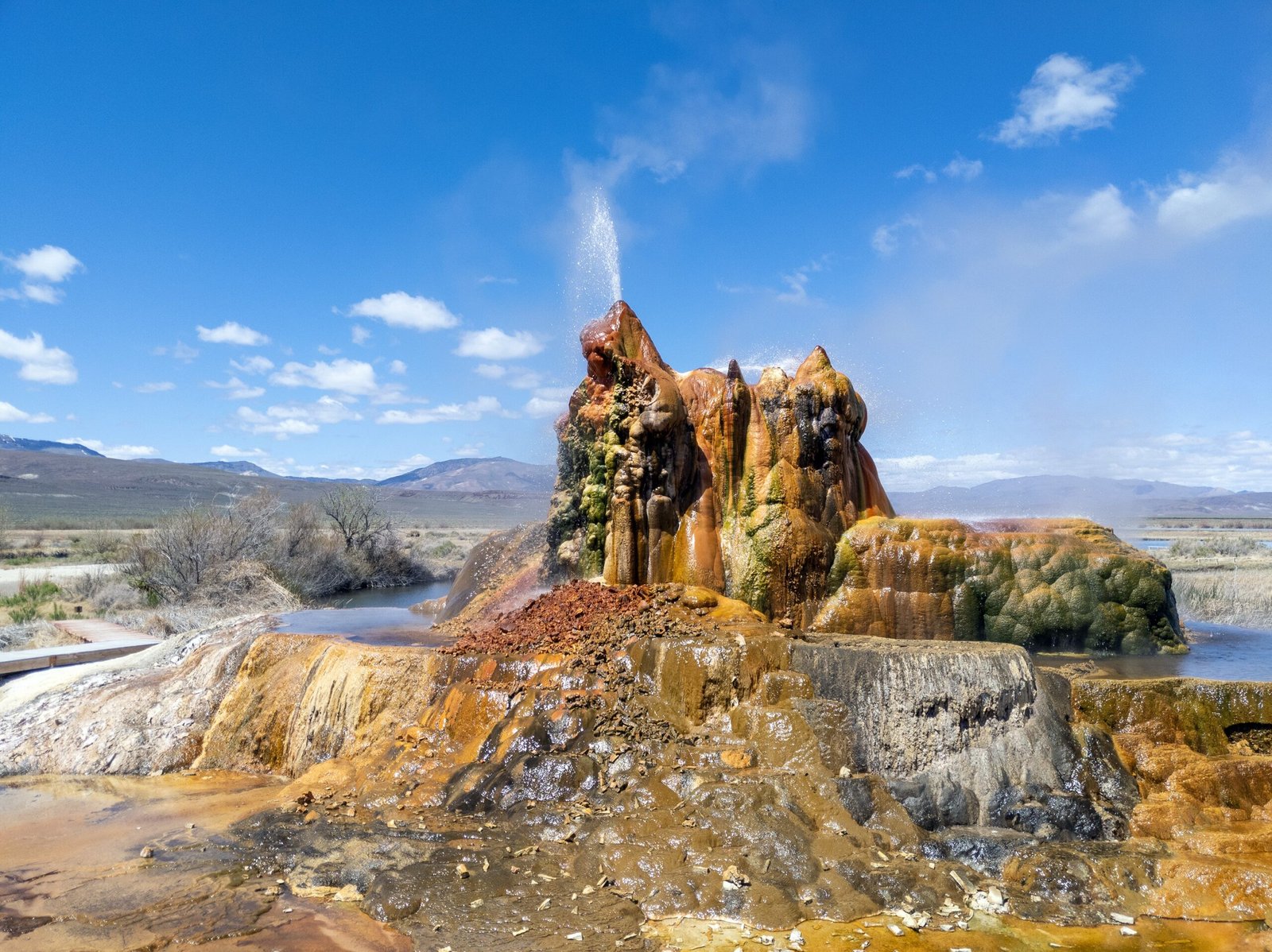
Spewing scalding water in all directions, the aptly named Fly Geyser sits about 10 miles from the site of Burning Man, the annual counterculture art festival in Nevada’s Black Rock Desert. This geological curiosity was formed accidentally in 1916, when ranch owners drilled a well in the area. They hit water, all right—too bad it




